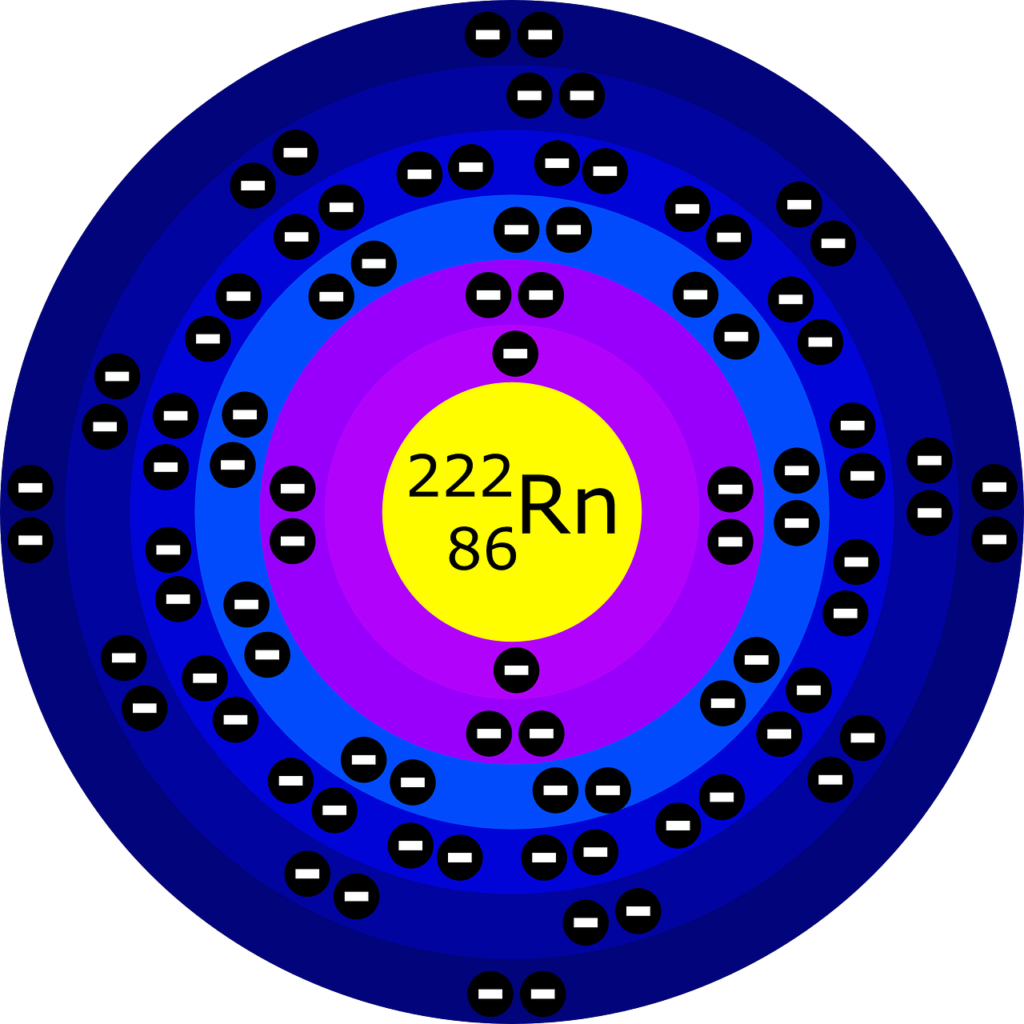Buyer Beware
Many Slab-On-Grade Homes Are Defective, Causing
Excessive Heat Loss And Are Uncomfortable To Live In
Roger first became aware of this defect when he was retained as a consultant to help resolve construction issues on a twin home. The floor along the edge of the outside wall of the home was covered with frost.
Defective slab-on-grade (S-O-G) homes lose an excessive amount of heat and often have cold floors and mold, due to improperly insulated foundations and dangerous air quality, with elevated levels of radon, VOC's, CO2, CH2O, and PM 2.5, due to inadequate ventilation!
S-O-G Defects Are Expensive To Remedy
The additional cost to insulate S-O-G foundations per code, during construction, is less
than $600, the cost to fix the defect can be over $20,000, depending on concrete work.

If concrete is exposed on a slab-on-grade foundation, it likely does
not comply with code. It is worse than not insulating the top 3 1/2"
of the upper walls of the total perimeter of your home.
The Building Code
R402.2.10 Slab-On-Grade Floors;
Slab-on-grade floors with a floor surface less than 12 inches below grade shall be insulated in accordance with Table R402.1.2. (R-10, 4ft. depth). The insulation shall extend downward from the top of the slab on the outside or inside of the foundation wall. The top edge of the insulation installed between the exterior wall and the edge of the interior slab shall be permitted to be cut at a 45-degree angle away from the exterior wall.
(The code requires the insulation start at the top of the floor slab. This is critical, but as these picture show, often ignored.)
A Bad Job!
The practice of cutting off the top 3½” of foam insulation on a slab-on-grade foundation and discarding it as garbage is wrong and doesn't comply with code! It is needed to create a thermal break between the exterior foundation wall and the interior concrete floor.
This is the most critical section of the foundation to insulate because it is in direct contact with the interior floor slab and it has the most exposure to the winter's sub-zero temperatures.
The R-Value of the foundation without insulation at the point it contacts the interior floor is R .65, that is less than that of a single pane of glass (R 1). Concrete is highly conductive, so heat is lost much quicker than it is replaced, causing the floor to be cold enough to freeze water.
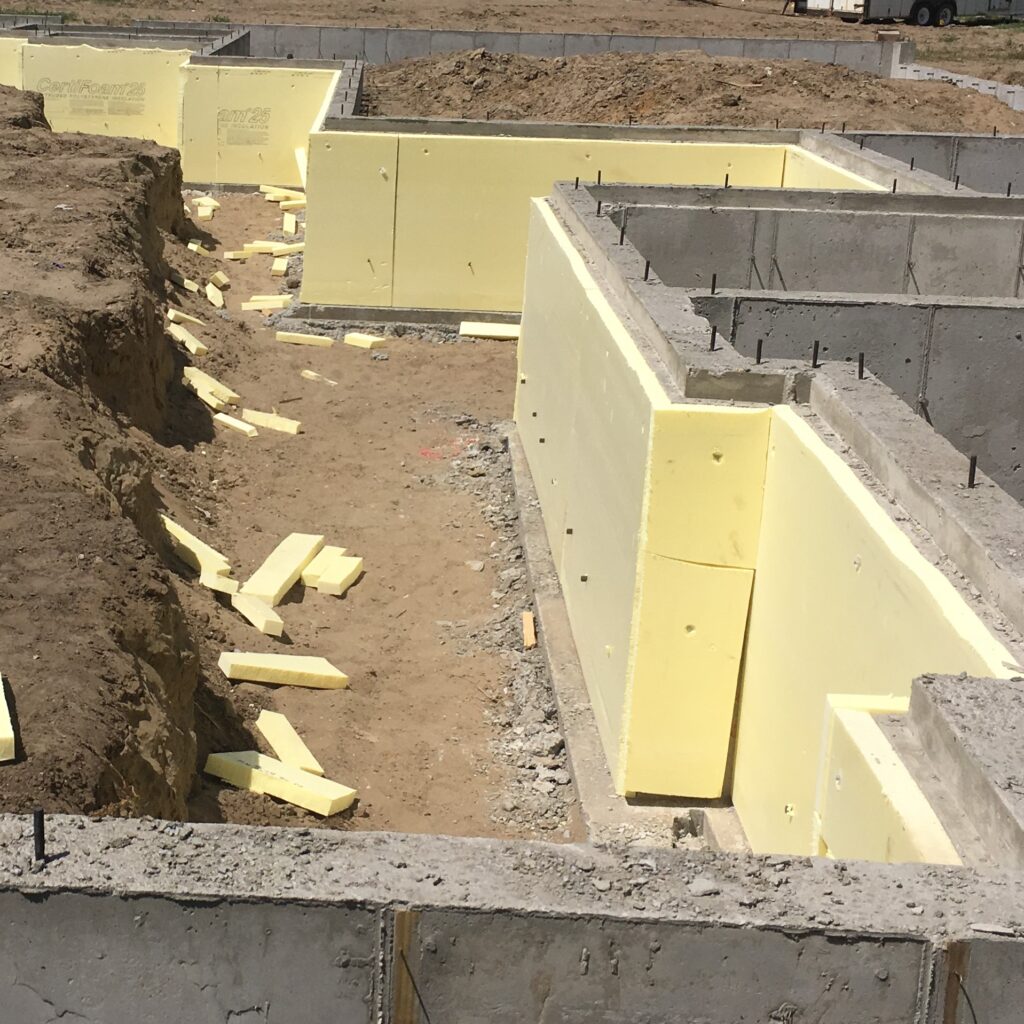
Making A Bad Job Even Worse
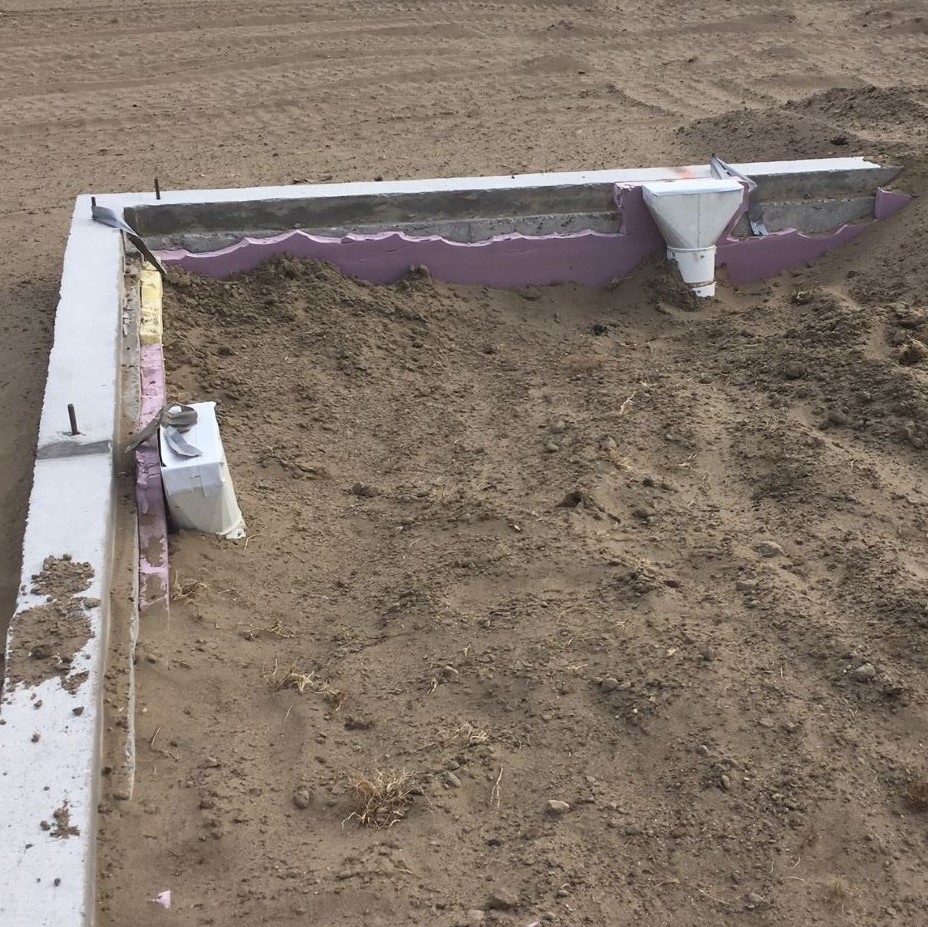
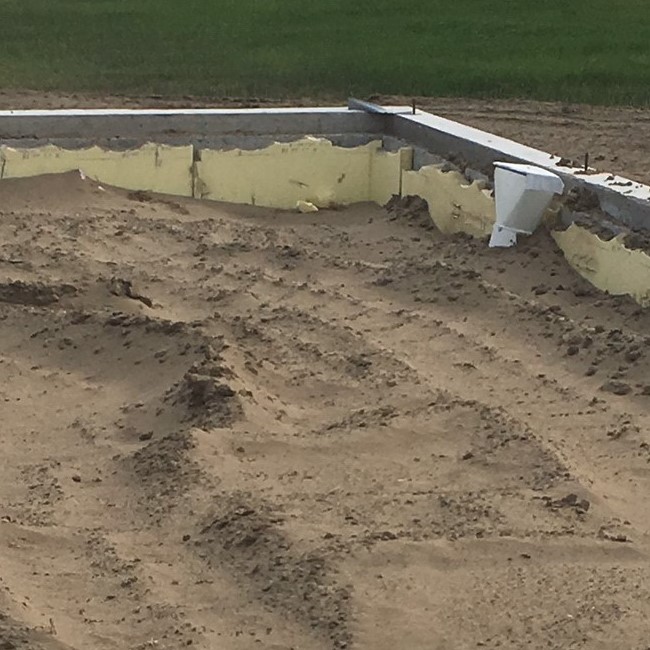
Not insulating to the top of the foundation is wrong, recklessly breaking it off shows a total lack of care or knowledge.
The rapid, conductive heat loss of the concrete between the outside wall and the HVAC duct will cause the heated furnace air to be cooled.
A Symptom Of The Defect
This picture shows snow melt caused by excessive heat loss from the part of the foundation that is in the pictures directly above.
The snow fell with a wind speed of 8 mph from the S/SE, which would have blown the snow directly against the pictured side of the house. The snow finished falling less than two hours before the picture was taken.
The defective installation of foundation insulation is causing the perimeter landscape soil to be heated to a temperature warm enough to quickly melt the falling snow, even in an area 20 inches away from the house.
The bump out area of the foundation shows a greater amount of heat transfer, snow melt, than the inset wall at the bottom of the picture; this is due to a heat duct that is located adjacent to the bump out wall.
In addition to heat loss, cold floors and potential mold developing in the wall cavities are additional problems related to this defect,
Another problem found in many S-O-G homes is the landscaping is often graded to an elevation just below the sill plate, as was done on this home. The heat loss and outdoor temperature change will cause the snow to go through freeze/thaw cycles, creating an ice dam that will cause water from melting snow to back up under the sill plate, saturating the plate and sheathing, causing mold and rotting of the sill plate and wall sheathing.
Decades ago we joked that it was very expensive, due to poor insulating practices, to have tulips blooming around the perimeter of your house in April, and now, with slab-on-grade homes, it's still possible.
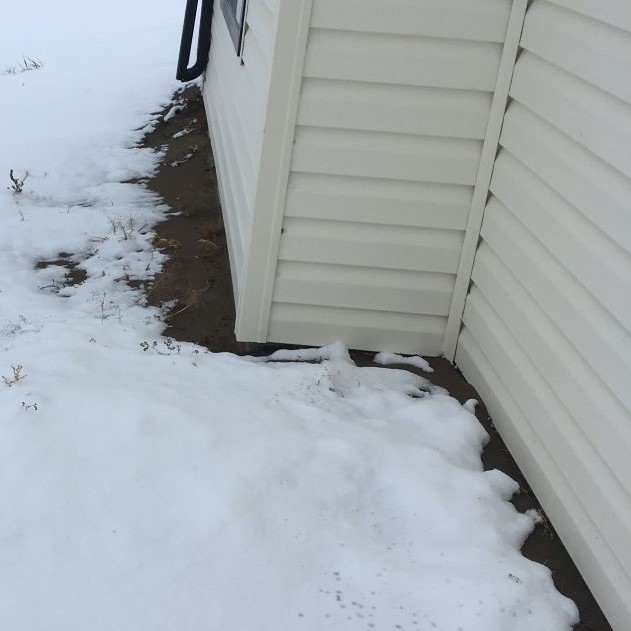
Infrared Scans Tell The Story
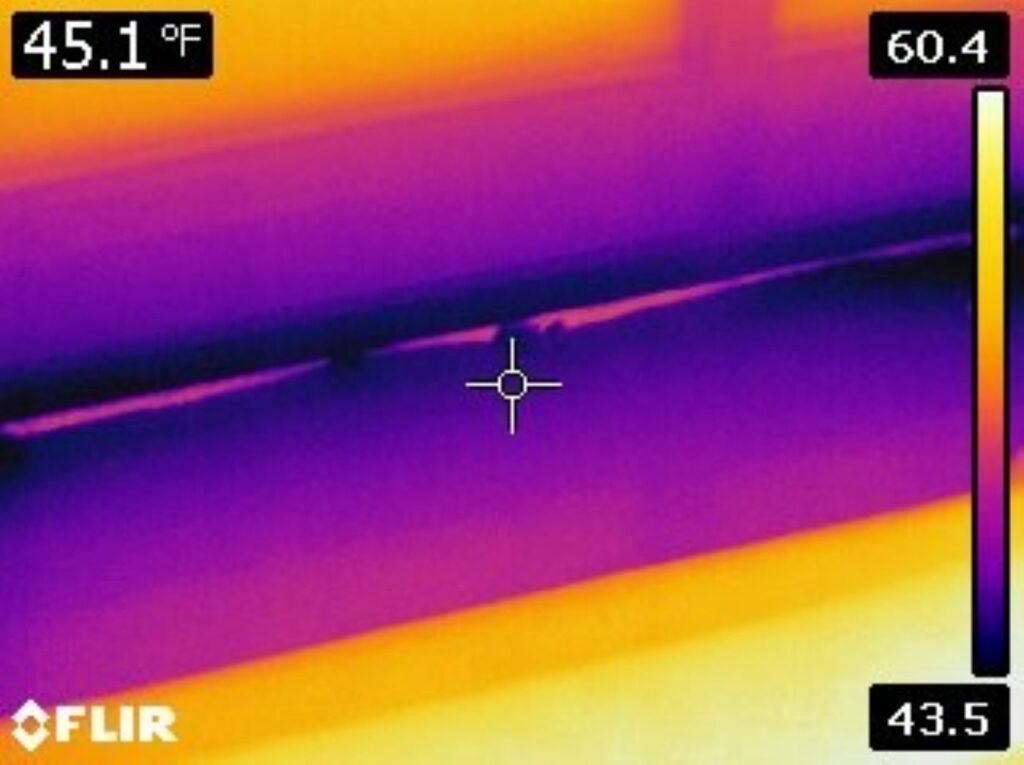
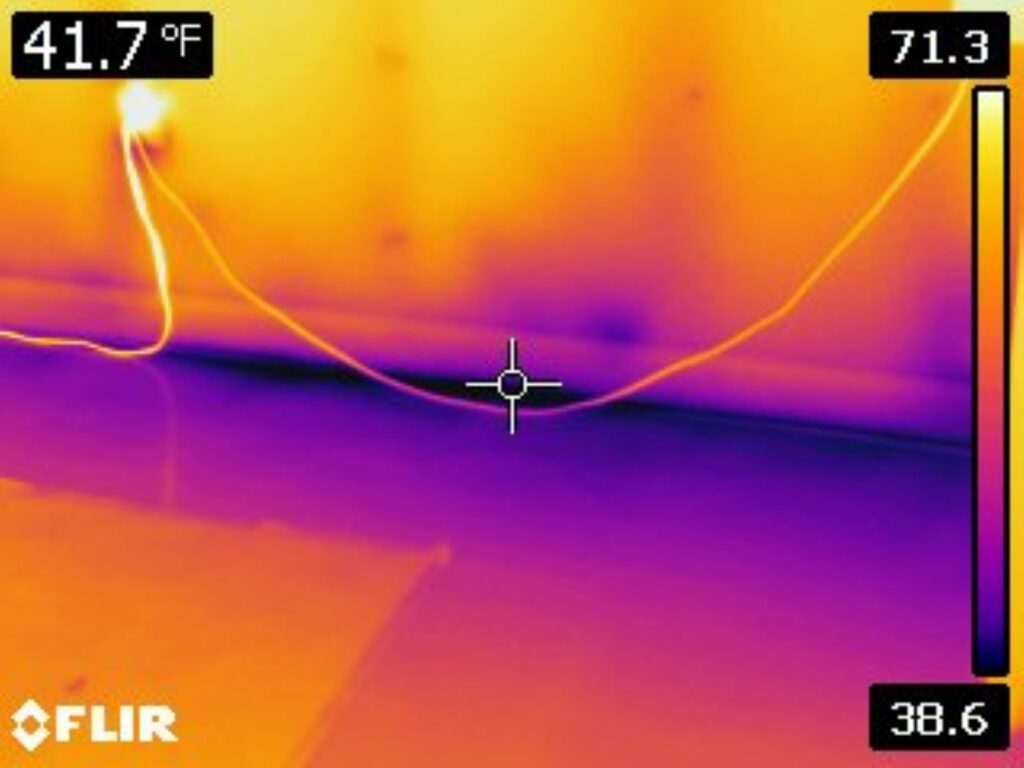
When the foundation is not insulated all the way to the top, the bottom plate and wall cavity cools, causing water vapor to condense, creating ideal conditions for mold to grow.
Some slab-on-grade homes are being built today that will have interior floors that are so cold in the winter that frost can form! This certainly doesn't create a very comfortable home.
Why Is It Done This Way?
It doesn't make sense, it doesn't pass code and there are plenty of sites online that show code compliant ways to insulate a slab-on-grade foundation. To do it in a defective manner, there has to be a lack of understanding of the building code or effective insulation practices. Another question is why City Code Inspectors and real estate home inspectors are not catching the problem.
The problem for the owners of slab-on-grade homes that were not insulated in compliance with the building code, is this defect will become common knowledge to the public and homebuyers. This could lower the value of the effected homes by more than $20,000 and buyers of these homes could have legal recourse against the party they purchased the defective home from. Without full disclosure, this is problem for sellers of defective slab-on-grade homes.
Slab-On-Grade and Radon
Radon is a cancer-causing radioactive gas that carries a greater risk of death when compared to other EPA listed carcinogens.
Some people believe that since slab-on-grade construction eliminates the basement that radon is not a problem. This is not true, there is no difference in radon gas seepage at the ground surface than there is 8 ft. down, as long as the soil composition is the same.
In reality, a slab-on-grade home can cause an even greater exposure to radon; this is because the primary entrance for radon, cracks, seams and voids in the concrete floor, has been moved to the primary living space.
North Dakota is a hotbed for radon, according to the State Health Department, two out of three homes in ND have a radon level over 4 pCi/L, a dangerous level that most scientists agree causes a death rate of 1 in a 100.
Unfortunately, since you can't see, smell or taste radon, it raises little concern among homeowners.
This problem has now been greatly increased by the new building code that requires the detailed air sealing of homes, without the requirement of any means of controlled ventilation.
Never buy a home without seeing a radon test result and never buy a newer home that does not have a mechanical ventilation system.
